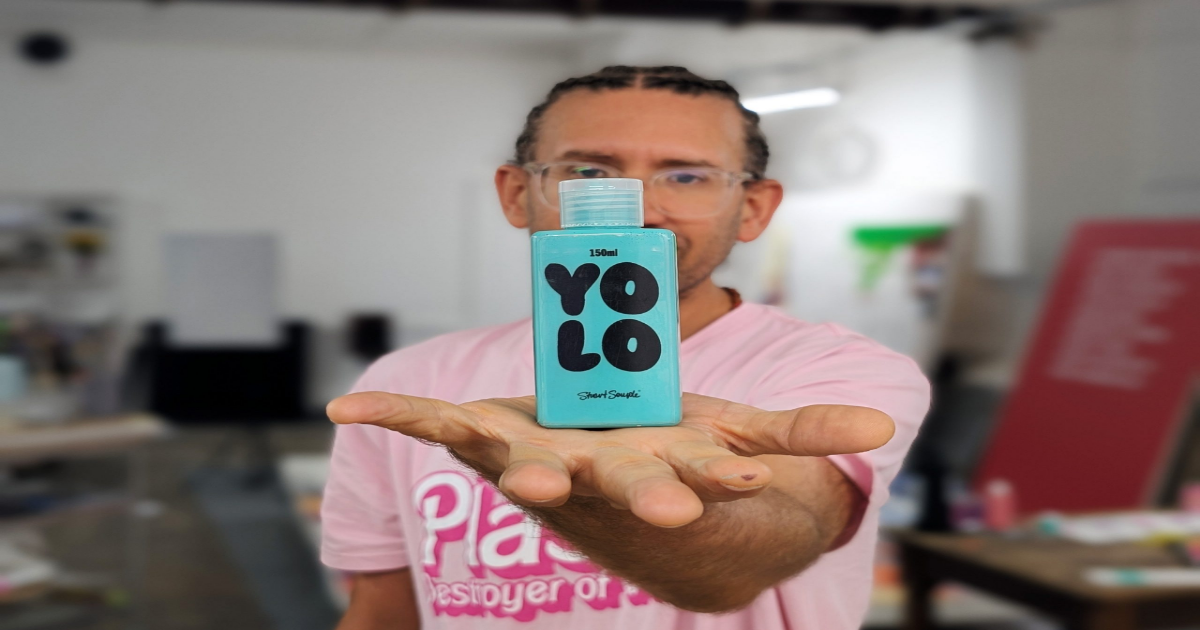Researchers at the University of California, Berkley, claim to have found a new color. The caveat? You can’t see it. Not unless you have a laboratory fitted with a complex laser system that’s cued into a specially designed software called Oz.
The “unprecedented” color that the five human subjects reported seeing during tests last year was described as a highly saturated blue-green. Call it a very special turquoise. The team of electrical engineers and vision scientists has called the color “olo” in a paper published in Science Advances on April 18.
Sign up for our daily newsletter.

The name helps explain the process behind the discovery. Olo is a stand-in for the binary 010, which refers to the three types of photoreceptor cone cells in the retina: short cones, which detect blue wavelengths; medium cones, which detect green wavelengths; and long cones, which detect red wavelengths. Natural light is a mixture of multiple wavelengths and we perceive its variations as different colors. Given the overlap between the cones, no wavelength in the world stimulates medium cones alone. This got researchers thinking: what would happen if they could isolate medium cones? Would people see the greenest of greens?
“Attempting to activate M cones exclusively is shown to elicit a color beyond the natural human gamut,” the researchers wrote in the paper. “Formally measured with color matching by human subjects. They describe the color as blue-green of unprecedented saturation.”
 Examples of target percepts with corresponding cone activations and laser microdoses, ranging from colored squares to complex imagery. Teal-striped regions represent the color “olo” of stimulating only M cones. Photo: Fong et al / DOI: 10.1126/sciadv.adu1052.
Examples of target percepts with corresponding cone activations and laser microdoses, ranging from colored squares to complex imagery. Teal-striped regions represent the color “olo” of stimulating only M cones. Photo: Fong et al / DOI: 10.1126/sciadv.adu1052.
The process to discover olo involved first creating a detailed map of each participant’s eye and its cones with a special imaging system. Then using Oz, named for the brilliant colors of the Emerald City in L Frank Baum’s fantasy books, a laser scanned an area of the retina about the size of a fingernail held at arm’s length. Upon arriving at a medium cone, it shot a tiny pulse of green light (think laser pointer color), which participants perceived as a new green.
“We’ve created a system that can track, target, and stimulate photoreceptor cells with such high precision that we can now answer very basic, but also very thought-provoking, questions about the nature of human color vision,” James Fong, who developed the Oz software, said in a statement. “It gives us a way to study the human retina at a new scale that has never been possible in practice.”
Beyond discovering new colors and shedding light on how the brain perceives the world, the researchers believe the technology help better understand eye diseases and color blindness.

Although the Berkeley team stressed that it is impossible to see olo in the real world and that any replication of it would be a meager imitation, one man has done just that.
After reading about the color, Stuart Semple, the British artist and self-described color geek, headed into the lab and got cooking. Semple’s practice often aims to democratize trademarked colors and make them available to artists. In the past, he’s created TIFF Blue in the face of Tiffany, Pinkie — The Barbiest Pink, and a series of blackest of black paints to rival Vantablack to which Anish Kapoor has exclusive rights.
 A sculpture in the color of Yolo. Photo courtesy of Stuart Semple.
A sculpture in the color of Yolo. Photo courtesy of Stuart Semple.
Now, Semple has released YOLO — the Y, he said, is for you, the artist.
“I’ve managed to take my learnings about refractions, reflections, different wavelengths of pigments, how they stimulate different parts of our eyes,” he said in a video accompanying the pigment’s launch. “And I’ve managed to make a paint that’s as close to this experience as we’re ever gonna get in physical form.”
The price for a 150ml bottle? $10,000—unless you’re an artist, in which case it’s $29.99. “I’m making this stuff the most experience art material ever made,” Semple said. “I want artists to use it.”
